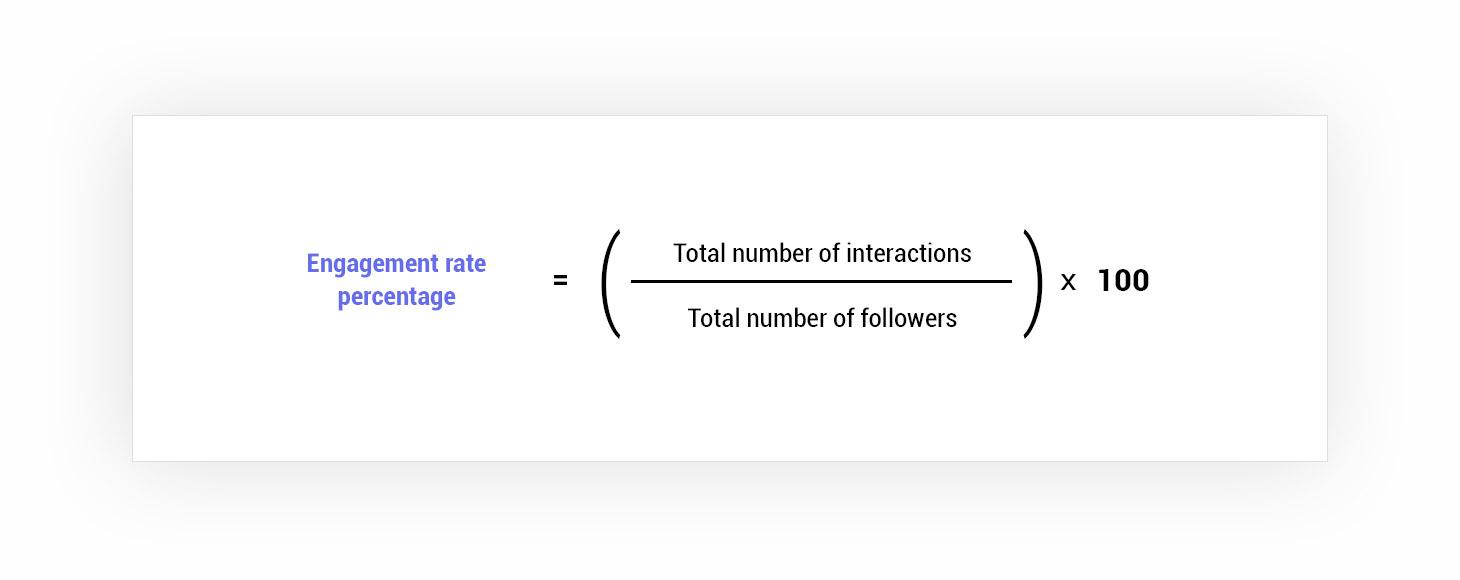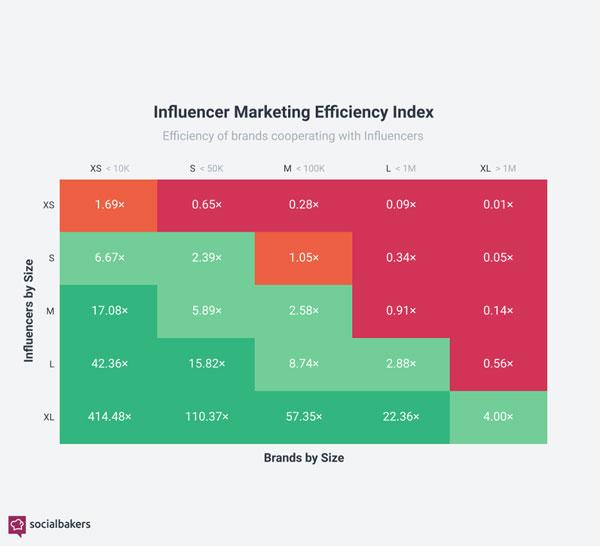Fake followers are a serious problem in the social media marketing world that continue to ruin brand reputation and waste budgets. Want to avoid this issue and add extra precaution to your marketing?
With the Socialbakers tool for engagement analysis you’re able to identify fake engagement and fake influences with a click. Here’s how:
AI helps you spot fake engagement anomalies on influencer profiles
Instant insights into your personas help you target the right audiences
Tracking influencer campaigns and evaluating effectiveness is easy
You can collaborate with full transparency through connected influencer insights
Fake followers – what are they and why are they bad?
Fake followers are fake social media profiles that were set up with the intention of mass-following other social media accounts for money.
These accounts are usually inactive, meaning they don’t engage with your content. On rare occasions when they do get active, they often spread spam-ridden posts ranging from silly memes to fake news.
Although the very idea of investing in a fake social media following might seem odd, it’s actually a regular practice for many brands. And there’s no shortage of fake followers to buy – especially on Twitter.
Twitter is actually taking great strides to reduce inauthentic platform activity and the numbers of their efforts are nothing short of astounding. Automatically, Twitter removes 6 to 7.5 million accounts per week as reported by Fast Company.
So, if platforms are openly against the purchasing of fake followers, why are brands and influencers consistently doing it?
This is because they mistakenly believe that a large audience size automatically makes them more reliable and popular.
But while a vast following might make your brand seem more important, building that following based on fake accounts carries many risks, such as:
Wasting your budget – Just imagine you spend big bucks on an influencer with millions of followers only to discover they were promoting your brand to bots and inactive accounts.
Decreasing your engagement – Because fake followers are inactive most of the time, they won’t interact with your content. As a consequence, your engagement volume will drop and skew your overall results, making it hard to assess the effectiveness of your content.
Ruining your brand’s reputation – Being exposed as a business who follows shady social media practices by buying fake followers can shatter your brand’s image. Also, people might start to question the trustworthiness of your entire company, which can damage your sales results.
Flooding your news feed with scams and unwanted content – No one wants their news feed overflowing with trashy posts – which is exactly what happens when your audience consists of fake accounts.
You can easily avoid these problems. All you need to do is build your audience organically, without any shortcuts or suspicious tactics – but we’ll get into it later.
For now, let’s look into how you can perform a fake followers audit.
How to do a fake followers audit
A thorough fake follower check on your own Instagram and Twitter profiles is something you should do at least once every six months.
Why? Even if you’re not buying fake followers, there’s a large chance some fake accounts are following you. That’s because, in an effort to make fake accounts appear more real, their owners often program them to follow random users.
Obviously, you want to weed out such accounts from your community – and that’s exactly where a regular fake follower check becomes useful.
To perform it you need to look at the ratio of engagement volume to audience size.
As we said before, fake followers are usually inactive and barely interact with your content. For this reason, social media profiles with an unusually low engagement rate will likely have fake followers among their audience.
There are two ways of measuring your audience’s engagement rate.
1. Calculate engagement rate percentage
Here’s a formula that will help you calculate your engagement rate percentage:

Let’s see how to put the formula into practice.
Imagine you want to uncover the share of your followers that interacted with your content throughout Q2 2021. You have the following numbers:
Total number of interactions: 973
Total number of followers: 18,116
Time to do some math:
(973 / 18,116) x 100 = roughly 5%
Now you know that the share of your audience that engaged with your content is 5%.
In other words, assuming each user engaged with your content just once, 5% of your followers did so.
Of course, this number doesn’t reflect the reality one hundred percent accurately. After all, some of your followers might have interacted with your content multiple times, which wouldn’t be represented by the engagement rate formula.
Still, the final result gives you a pretty good understanding of the share of your active audience.
2. Measure your Number of Interactions per 1,000 Fans
To learn how many of your followers are active without the hassle of calculations, use our exclusive metric – Number of Interactions per 1,000 Fans. You can access this metric using our Analytics platform.
Our metric allows you to quickly find out how many users out of each 1,000 followers interacted with your content.
The formula looks as follows:

Let’s use the following numbers to illustrate how the formula works:
Sum of interactions you received on your latest post: 65
Total number of followers when the post was published: 7,167
(65 / 7,167) x 1,000 = 9.07
As you can see, for each 1,000 of your followers, 9 engaged with your content – that’s a very good result!
The benefit of using the Number of Interactions per 1,000 fans metric is that you’re able to see the engagement share for every single post. You can also track the metric’s evolution over time to spot any anomalies in your interactions to audience size ratio.
Now, what engagement rate would be an indicator of fake followers littering your community? Learn more about Instagram engagement in our blog packed with exclusive data points!
How to check influencers' profiles for fake Instagram followers
Fake followers being a part of your social media audience is bad for your business. But what’s even worse is spending your budget on a fake influencer whose most valuable asset – their audience – is built of bots and fake accounts.
How do you make sure the influencer you want to collaborate with is legit?
You can follow the steps discussed in the previous section and apply them to the influencer of your choice.
Or, to simplify the process, use our Influencer discovery tool to get an instant overview of the influencer’s key performance metrics, including their engagement rate.
The Number of Interactions per 1,000 Followers will often be higher for influencers than brands. That’s because social media influencers (the real ones, of course) are close to their audiences and know what type of content will strike a chord with their followers. This is why partnering with an influencer can be extremely effective if you don’t yet have a strong content strategy.
But how high should influencers’ engagement rate be to consider them effective? It depends on their audience size, and the size of your business, too.
Our research revealed that when influencer effectiveness is compared in relation of their audience size to the size of the audience of the brand they’re collaborating with, for smaller businesses influencers with extremely large audiences yield the best return, while the effect for larger brands is reduced when collaborating with smaller influencers.

Now that you know how to perform a fake followers check for both your and influencers’ profiles, let’s discuss one more important issue. Building a healthy, fake followers-free social media audience in an organic way.
How to organically build a healthy and engaged social media following
There are many ways to build a loyal social media community without resorting to buying fake followers. This should always be the go-to strategy.
Here are five important practices that any marketer can leverage:
Understand your followers – Whether you’re followed by 100 or 100,000 people, it’s important that you take time to get to know them better. Analyzing your audience’s demographics, interests, and behaviors will help you identify what they care about. As a result, you will be able to develop a tailored social media strategy that will help you win new followers.
Publish relevant content – This tactic is closely tied to the first point; the more you know about your social media audience, the more personalized content you’re able to create. Publishing personalized posts, in turn, is a proven way to get more interactions and draw more users in your niche to your page.
Publish consistently – Posting consistently is something you need to do to keep popping up in social media news feeds and reaching new potential followers. To be able to publish regularly, optimize your content workflow, stock up on the right publishing tools, and learn the best times to post.
Amplify your reach through influencers – Just make sure you pick the real ones! Influencers can help promote your business to new audiences, spark interest in your services or products, and get people to follow you on social media.
Create shareable posts – Another great tactic to get your content in front of new audiences and grow your following is creating content that users want to share. To achieve that, make your posts short and digestible, provide information or entertainment, appeal to strong emotions, or offer your readers a surprise.
The takeaway
If you’re like most marketers, you don’t want anything to do with fake followers. Still, with the prevalence of fake accounts and bots on social media, there’s a chance that some of them are a part of your audience or, even worse, members of your prospective influencer’s audience.
That’s why it’s so important to perform a fake followers audit on a regular basis. It will enable you to make sure your social media audience is authentic, and help partner up with legitimate influencers.
So if you haven’t already, take the first important step in eliminating fake followers by doing a thorough engagement analysis on your profiles!
Editor's Note: This article was originally published on socialbakers.com. Any statistics or statements included in this article were current at the time of original publication.
























